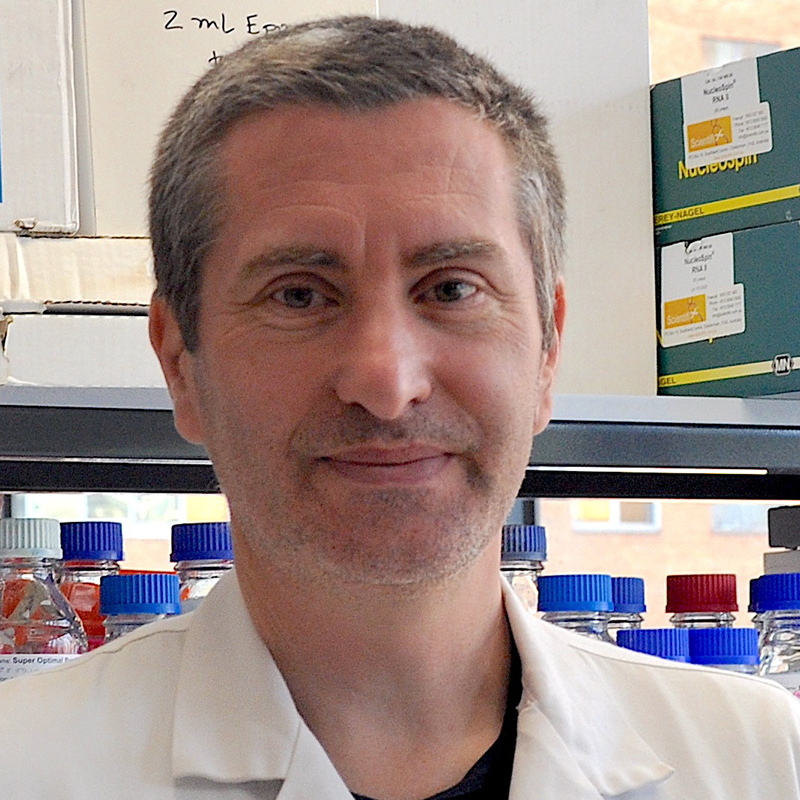RIN Affiliates
Professor John Mattick AO FAA FTSE FAHMS

John Mattick is best known for showing that the majority of the human genome is not junk but rather is dynamically transcribed to produce not only mRNAs but also hundreds of thousands of small and long non-protein-coding RNAs (lncRNAs) that control cell and developmental biology. He has published over 300 scientific articles, which have been cited over 83,000 times. He was the first to propose that regulatory RNAs control development (Current Opinion in Genetics and Development 1994; Molecular Biology and Evolution, 2001; Nature Reviews Genetics 2004, 2009, 2014; Scientific American 2004) With his colleagues he discovered ultraconserved elements in the human genome (Science, 2004), showed that lncRNAs are dynamically expressed during differentiation and development (Genome Research, 2008) including neuronal differentiation (BMC Neuroscience, 2010), and are specifically expressed in hippocampus, cortex and cerebellum (PNAS, 2008), some of which he is currently knocking out to examine their roles in brain development, learning and behaviour. With Tim Mercer and colleagues, he proposed the modular structure-function of lncRNAs (Nature Structural and Molecular Biology, 2014) and developed new methods for high resolution transcriptome analysis (Nature Biotechnology, 2012), which revealed the almost universal alternative splicing of lncRNAs (Cell Systems, 2019). He has completed a book entitled “RNA, the Epicenter of Genetic Information”, to be published in mid-2022. His awards include the University of Texas MD Anderson Cancer Center Ernst W. Bertner Memorial Award for Distinguished Contributions to Cancer Research, and the Human Genome Organization Chen Award for Distinguished Achievement in Genetic and Genomic Research.
Book: RNA, the Epicenter of Genetic Information
Professor Tony Hannan

Professor Anthony Hannan’s team provided the first demonstration in any genetic animal model that environmental stimulation can be therapeutic (van Dellen et al., 2000, Nature). This has led to new insights into gene-environment interactions in various brain disorders, including Huntington’s disease, dementia, depression, schizophrenia and autism spectrum disorders. His laboratory explores how genes and the environment combine via experience-dependent plasticity in the healthy and diseased brain. Their research includes models of brain disorders which involve cognitive and affective dysfunction, investigated at behavioural, cellular and molecular levels so as to identify pathogenic mechanisms and novel therapeutic targets. In recent years his group has been exploring transgenerational epigenetic inheritance of acquired traits in response to paternal environmental exposures and experience. They have shown that non-coding RNAs in sperm can be modulated by stress hormones, exercise and other experience-dependent factors (e.g. Short et al., 2016, 2017, Translational Psychiatry; Yeshurun & Hannan, 2019, Molecular Psychiatry). Other RNA-related interests including tandem-repeat transcriptomics (e.g. Hannan, 2018, Nature Reviews Genetics). www.florey.edu.au/epigenetics-and-neural-plasticity-laboratory
Professor Murray Cairns

Professor Murray Cairns is interested in understanding the role of genetic and epigenomic variation in synaptic function and psychiatric disorders (Kiltschewskij and Cairns NAR 2019). His research has focused on transcriptional analysis of schizophrenia and the role of non-coding RNA, particularly small transacting miRNA and their interaction with mRNA and competing endogenous RNA. These networks can have tremendous influence through posttranscriptional regulation of gene expression. Alteration of these posttranscriptional networks may be useful biomarkers of disease state and can reveal new targets for therapeutic manipulation through systems biology. Professor Cairns’ research more broadly is exploring the use of genomics in precision medicine for complex disorders (Reay and Cairns, Nature Reviews Genetics 2021).
A/Professor Kelly Clemens

A/Professor Kelly Clemens is a behavioural neuroscientist working at the interface between molecular biology and mental health. A major focus of her group is how drug use can lead to epigenetic changes (histone modifications, DNA-methylation) that regulate the expression of genes critical to the development, maintenance and relapse of drug addiction. This includes how long non-coding RNA may recruit regulatory proteins to influence gene expression, and whether these lncRNA can be targeted to reverse the impact of drug use. A second emerging research focus of the Clemens group is investigating how prenatal opioid exposure leads to epigenetic changes in the brain that may underlie poor long-term mental health and cognitive outcomes across development.
A/Professor Irina Voineagu

A/Professor Irina Voineagu is a molecular biologist interested in how gene expression is regulated in the normal human brain and how it is disrupted in neurodevelopmental disorders. One of the major areas of focus is the investigation of non-coding regulatory elements such as enhancers through high-throughput CRISPRi screening in brain cells. Her group also investigates how non-coding RNAs, in particular circular RNAs, are involved in gene expression regulation, and the mechanisms underlying their biogenesis. www.voineagulab.org.
Professor Carl Walkley
Cancer and RNA Biology Laboratory, St Vincent’s Institute
ORCID

My research program focusses on understanding the role of RNA regulation in normal biology, in particular the role of A-to-I RNA editing mediated by ADAR proteins. We have used in vivo genetics to determine the essential physiological functions of ADAR1 and to gain a better understating of the functions of A-to-I RNA editing in normal development and homeostasis. We are interested in understanding how A-to-I editing, and other RNA binding proteins that intersect with ADAR1 biology, contribute to normal brain function and behaviour.
